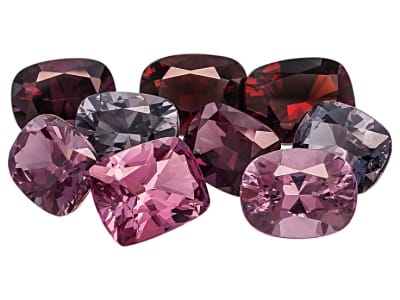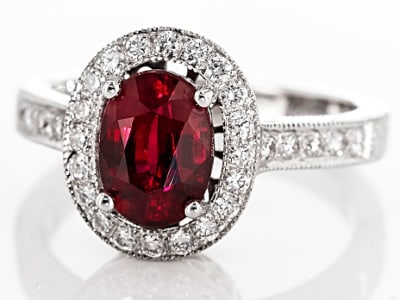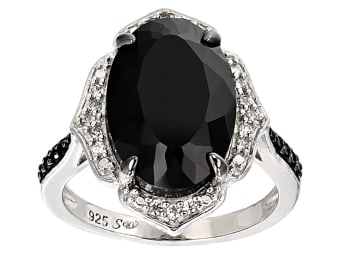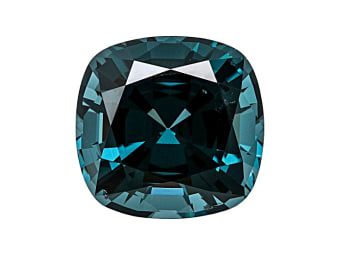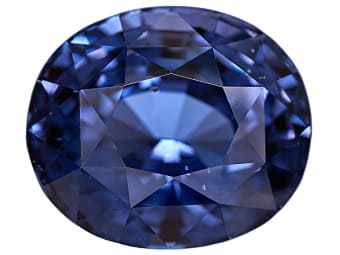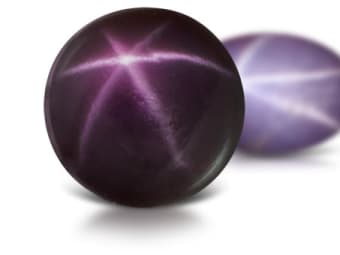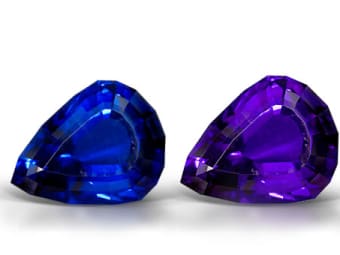Spinel has been used in used in jewelry for centuries. The earliest known spinel gemstones date back to 100 B.C. to excavations of Buddhist tombs in Afghanistan. Most spinel in antiquity were thought to be ruby or garnet before the advent of modern gemology. Spinel is a mineral species belonging to a larger group of minerals with similar structures known as the spinel group. The spinel group is made up of spinel, gahnospinel, and gahnite. Spinel is the only one in the group widely used in jewelry. Spinel was first synthesized in the 1920’s. Lab created spinel is widely used in class rings and birthstones simulants. Lab created spinel doublets and triplets can frequently be found in antique jewelry.
General Information
LWUV: Variable
Spinel Colors
-
 Black
Black -
 Blue
Blue -
 Blue
Blue -
 Blue
Blue -
 Brown
Brown -
 Colorless
Colorless -
 Gray
Gray -
 Green
Green -
 Orange
Orange -
 Pink
Pink -
 Pink
Pink -
 Pink
Pink -
 Purple
Purple -
 Red
Red -
 Red
Red -
 Yellow
Yellow
Spinel Spectra
We acknowledge the significant scientific contributions of John S Harris, FGA to the study of gemstone spectra and with deep appreciation to him, acknowledges the use of his images and related notes about gemstones and their spectra in the educational materials on this website.
Alternate Names
Flame Spinel, Rubicelle, Ceylonite, Pleonaste, Alumag, Corundolite, Lustergem, Magalux, Radient, Strongite ,Wesselton, Simulated Diamond, Aquagem, Rozircon, Berylite, Dirigem, Perigem, Emerada, Erinide
Countries of Origin
Tanzania, United Republic Of; Myanmar; Afghanistan; Russian Federation; Viet Nam; Cambodia; United States of America; Madagascar; Thailand; Mozambique; Pakistan; Unknown; China; Brazil; Nigeria; Romania; Sri Lanka; Switzerland; Bolivia (Plurinational State of); India; Canada; Namibia; Venezuela (Bolivarian Republic of); Germany; Tajikistan
History
It's been called the great impostor, because historically it's been mistaken for other stones. For example, some of the most famous rubies in history aren't rubies. They're spinel. We feel this does a disservice to spinel. Spinel deserves to stand on its own; to be recognized for what it is. Delightfully dazzling, this stone is one of the under-sung beauties of the jewelry world. Spinel is not an impostor - spinel has always been spinel. It's just that, for many centuries, we didn't know it. Today, we do know spinel, and a fine stone it is - hard, wonderfully wearable, sparkling, and available in a variety of colors.Treat yourself to spinel today. At JTV®, we have a wide range of choices in beautiful, affordable spinel.
Care
Normal care
More About Spinel
In some cultures, it was believed that spinel could protect a person from the evil-eye. For many centuries, spinel was associated with power, fire, and life. Folklore... it doesn't have any scientific support, but it is certainly fascinating!
Creation Method
Flux Lab Created
One method of creating synthetic spinel is called flux growth.During the flux growth process, flux, a substance that reduces the melting point of surrounding material, is combined, in a metal-lined crucible, with the elements that make up a specific gem mineral.The crucible is heated until its contents are liquid and then it is allowed to cool very slowly.As cooling continues, the gem mineral crystallizes from the solution.Flux grown synthetic gems can take up to a year to grow to a facetable size, but the exceptional clarity of these gems is well worth the wait!Synthetic gems have the same chemical, optical, and physical properties of their natural counterparts, but are a more cost-effective alternative to a natural gem.
Tolerance:(+0.003/-0.003)
Flame Fusion Lab Created
The flame fusion process for creating gems, also called the Verneuil process, is the most affordable and common synthesis method for producing corundum (ruby and sapphire) and spinel. Powdered chemicals (the building blocks of the gem) are dropped through a high-temperature flame. The molten powder repeatedly falls from the flame onto a rotating pedestal, creating a synthetic crystal, called a boule, which can later be faceted into a gemstone. Synthetic gems have the same chemical, optical, and physical properties of their natural counterparts, but are a more cost-effective alternative to a natural gem.
Tolerance:-1.5
Species/Variety
Black Spinel
Black spinel is the iron rich and opaque variety of spinel. It has also been called pleonaste and ceylonite. Local Thai miners call it “nin” or black stone. Stones are free of fractures and displays a high luster. High-quality black spinel is known is known to come from Mexico and Thailand. Most material comes from the Bo Phloi District of Kanchanaburi Province, Thailand where it is was a byproduct of blue sapphire mining. When the blue sapphire ran out in the early 2000’s the local cutters started faceting the black spinel.
Gahnospinel
Gahnospinel is the rare violetish to dark blue, zinc-rich variety of spinel. A variety of spinel rich in zinc, much of the world's supply of gahnospinel comes from Sri Lanka. Since gahnospinel is chemically midway between spinel and gahnite, hence its name is a combination of the two. The first half is in honor of Johann Gottlieb Gahn, a Swedish chemist and mineralogist.
Tolerance:(+0.020/-0.020)
LWUV: Inert
Gahnite
Ranging from dark green to black in color, gahnite is a rare member of the spinel group. It was first discovered in Sweden 1807 and named in honor of Swedish chemist J.G. Gahn, who is credited with the discovery of manganese. While highly prized by mineral collectors for its octahedral crystal formation, gahnite is on occasion cut into faceted gems.
Tolerance:(+0.005/-0.010)
Cobalt Spinel
Natural cobalt spinel is vivid blue and is colored by cobalt. The color ranges from greenish blue to violet blue. Natural cobalt spinel can be separated from lab created blue spinel by its RI and spectra.
Optical Phenomena
Star
Star spinel exhibits the optical phenomenon called asterism, a star-like pattern created on the surface of a gemstone when light encounters parallel fibrous, or needle-like, inclusions within its crystal structure. Light that strikes the inclusions within the gem reflects off of the inclusions, creating a narrow band of light. When two or more intersecting bands appear, a star pattern is formed. Depending on the crystal, the star may have four, six, or even twelve rays. When only one band forms, it is classified as a "cat's eye". Star spinel is highly treasured by collectors for its phenomenal quality.
Tolerance:(+0.017/-0.008)
Color Change
Along with a rich range of hues, spinel offers color-change varieties. Color change spinel usually appears violet blue under fluorescent light and purple under incandescent light. Spinel is one of few gemstones that require no special treatments; its beautiful, vivid colors and clarity are entirely natural. Spinel is also excellent for use in jewelry because it is hard, tough, and often more affordable than ruby or sapphire.
Tolerance:(+0.017/-0.008)
LWUV: Moderate to strong chalky red
